
How much do you know about July’s “on this day” people and events from the Tudor period?
Test your knowledge with this fun wordsearch from our Tudor Society archives.
[Read More...]
How much do you know about July’s “on this day” people and events from the Tudor period?
Test your knowledge with this fun wordsearch from our Tudor Society archives.
[Read More...]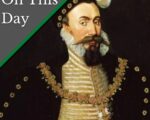
On this day in Tudor history, 31st July 1553, in the reign of Queen Mary I, Henry Grey, Duke of Suffolk, was “discharged out of the Tower by the Earle of Arundell and had the Quenes pardon.”
Suffolk had been imprisoned after Mary I had overthrown his daughter, Queen Jane, or Lady Jane Grey, and been proclaimed queen on 19th July 1553. Suffolk’s release was down to his wife, Frances, interceding with her cousin the queen and begging for mercy.
[Read More...]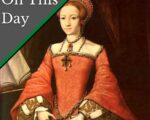
On this day in Tudor history, 30th July 1553, eleven days after her half-sister, Mary, had been proclaimed queen, Elizabeth, daughter of King Henry VIII and Anne Boleyn, left her new home, Somerset House, to ride to Wanstead and greet Mary.
Somerset House was Elizabeth’s new London residence and you can find out more about how Elizabeth acquired it and who built it originally in this video:
[Read More...]
As it’s the 434th anniversary of England’s defeat of the Spanish Armada at the Battle of Gravelines on 29th July 1588, I thought I’d share with you these two Spanish Armada Quizzes from our archives.
Have fun and good luck!
[Read More...]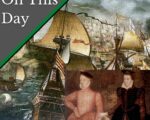
On this day in Tudor history, Sunday 29th July 1565, twenty-three-year-old Mary, Queen of Scots, queen regnant of Scotland, married her second husband, nineteen-year-old Henry Stuart, Lord Darnley, at Holyrood Palace.
I give details of their wedding and how the couple’s marital bliss was rather short-lived…
[Read More...]
On this day Tudor history, 28th July 1540, in the reign of King Henry VIII, on the same day that Thomas Cromwell was executed, a client of his also ended his life on the scaffold.
He was accused of magic and “detestable vice and sin”. What did this refer to?
Find out more about him in this edition of #TudorHistoryShorts…
[Read More...]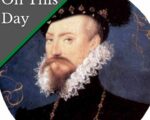
On this day in Tudor history, 27th July 1588, Robert Dudley, Earl of Leicester, wrote to Queen Elizabeth I with an invitation. He was intent on keeping the queen, the woman he loved, out of harm’s way.
What was his invitation?
[Read More...]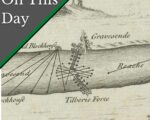
On this day in Tudor history, 26th July 1588, in the reign of Queen Elizabeth I, troops prepared for the expected Spanish invasion.
4,000 men assembled at Tilbury Fort on the north bank of the River Thames in an effort to prevent the Spanish Armada from travelling up the river and attacking London.
Let me explain what had led up to this day…
[Read More...]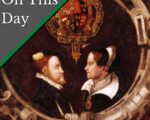
On this day in Tudor history, 25 July 1554, on the Feast of St James, Mary I, daughter of Henry VIII by Catherine of Aragon, got married at Winchester Cathedral in a ceremony officiated by Lord Chancellor Stephen Gardiner, Bishop of Winchester.
The thirty-eight-year-old Mary married twenty-seven-year-old Philip of Spain, son of her cousin, Charles V, Holy Roman Emperor.
Let me share a contemporary account of Mary and Philip’s wedding ceremony…
[Read More...]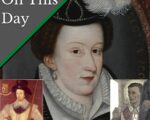
On this day in Tudor history, 24th July 1553, in the reign of Queen Mary I, merchant and conspirator Richard Hesketh was born in Lancashire.
Hesketh is known for the Hesketh Plot of 1593, when he urged Ferdinando Stanley, 5th Earl of Derby, to lead a rebellion to claim the throne of England.
But who was Richard Hesketh and why did he plot against Queen Elizabeth I?
What happened to him and what happened to Ferdinando Stanley?
And why did Stanley take bezoar stone and unicorn horn?
[Read More...]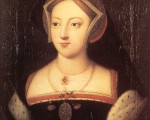
How much do you know about the family of Mary Boleyn, sister of Queen Anne Boleyn and mistress to King Henry VIII?
Test yourself with this fun quiz.
[Read More...]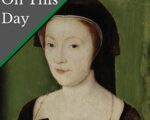
On this day in Tudor history, 23rd July 1543, or 24th according to some sources, Marie de Guise and her baby daughter, Mary, Queen of Scots, escaped from Linlithgow Palace.
They were helped by Cardinal David Beaton, who took them to Stirling Castle.
[Read More...]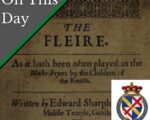
On this day in Tudor history, 22nd July 1576, in the reign of Queen Elizabeth I, playwright and pamphleteer, Edward Sharpham, was baptised at Colehanger, East Allington, in Devon. Sharpham is thought to have written the plays “The Fleire” and “Cupid’s Whirligig”, and fellow playwright Ben Jonson referred to him as a rogue.
Find out more about this lesser-known Tudor man and his comedy Cupid’s Whirligig…
[Read More...]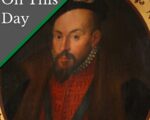
On this day in Tudor history, 21st July, 1553, two days after Mary I had been proclaimed queen, John Dudley, Duke of Northumberland was arrested near Cambridge.
This was just days after Northumberland had left London with an army to apprehend Mary, on behalf of his daughter-in-law, Queen Jane (Lady Jane Grey).
But how and why did the man who had ruled England on Edward VI’s behalf, as Lord President of his privy council, come to this?
I explain his role in the accession of Lady Jane Grey in July 1553 and what happened when Mary overthrew Queen Jane…
[Read More...]
On this day in Tudor history, 20th July 1554, Philip of Spain, son of Mary I’s cousin, Holy Roman Emperor Charles V, arrived in England.
He had come to prepare for his forthcoming marriage to Mary I.
[Read More...]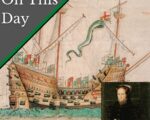
On this day in Tudor history, 19th July 1545, in the reign of King Henry VIII, the king’s flagship, the Mary Rose, sank right in front of his eyes.
She sank in the Battle of the Solent between the English and French fleets.
But why did the Mary Rose sink?
[Read More...]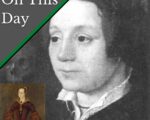
On this day in Tudor history, 18th July 1565, in the reign of Queen Elizabeth I, the queen’s close friend and loyal servant, Kat Ashley, died.
Find out more about Kat (also known as Katherine Ashley, Katherine Astley and Katherine Champernowne) in this edition of #TudorHistoryShorts…
[Read More...]
On this day in Tudor history, 17th July 1555, Protestant martyrs Christopher Wade (Waid) of Dartford, linen-weaver, and Margaret, or Margery, Polley, a widow from Pepenbury, Tunbridge, were burnt at the stake for heresy.
Let me tell you more about this man and woman, what led them to their awful fates, and what happened on that day in 1555…
[Read More...]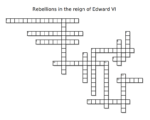
Edward VI’s reign was relatively short but but saw two major rebellions against his government, both in the summer of 1549.
How much do you know about Kett’s Rebellion and the Prayer Book Rebellion?
Find out with this fun crossword puzzle.
[Read More...]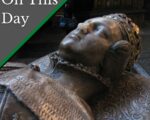
On this day in Tudor history, 16th July 1517, the feast of St Francis, in the reign of King Henry VIII. Frances Brandon was born.
Frances was King Henry VIII’s niece.
[Read More...]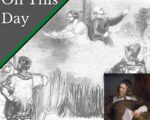
On this day in Tudor history, 15th July 1556, in the reign of Mary I, the trial of Julins Palmer, John Gwyn and Thomas Robyns opened at St Nicholas Church in Newbury. These men, who are now known as the Newbury Martyrs, were accused of sedition and heresy.
But how did Julins Palmer, a formerly staunch Catholic end up being executed for heresy in Mary I’s reign?
Find out more about Palmer, his trial and the executions of the Newbury Martyrs…
[Read More...]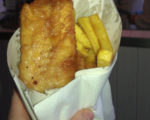
This Friday’s treat from the archives has a food theme – yum! It’s a talk I did on fast food Tudor style.
Fast food is very much part of our world today, with cities worldwide having burger franchises, pizza outlets, fish and chip shops, Indian and Chinese restaurants, and lots more, and it made me wonder about fast food and street food in Tudor times, so I did some digging for this Claire Chats talk…
[Read More...]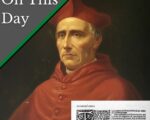
On this day in Tudor history, 14th July 1514, in the reign of King Henry VIII, Cardinal Christopher Bainbridge died in Rome.
Who was this cardinal?
And who claimed to have poisoned him and why?
[Read More...]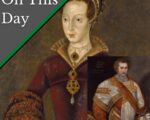
On this day in Tudor history, 13th July 1553, while the queen’s father-in-law, John Dudley, Duke of Northumberland, was preparing to leave London to apprehend the late Henry VIII’s daughter, Mary, members of Queen Jane’s royal council were meeting with the imperial ambassadors.
What was the meeting about?
What was the news from East Anglia?
And why were the queen’s councillors beginning to feel uneasy?
Let me explain…
[Read More...]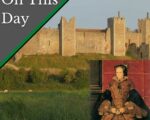
On this day in Tudor history, 12th July 1553, Mary (future Mary I), the half-sister of the late King Edward VI, moved from Kenninghall to Framlingham Castle. There, she set about rallying support for her claim to the throne.
Lady Jane Grey, Mary’s cousin’s daughter, had been proclaimed queen on 10th July but Mary believed the crown was hers.
Sir Thomas Cornwallis was able to intercept Mary on her journey to Framlingham and pledge his loyalty to her. He wasn’t the only one flocking to her cause.
Meanwhile, back in London, the new queen, Queen Jane, made a serious mistake by refusing to send her father to go and apprehend Mary.
Why was this a mistake?
Find out what was going on back in 1553 in this video…
[Read More...]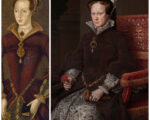
On this day in Tudor history, 11th July 1553, Sir Thomas Cornwallis, sheriff of Norfolk and Suffolk, Lord Thomas Wentworth, and some other prominent Suffolk gentlemen declared for Queen Jane (Lady Jane Grey) in Ipswich, Suffolk. They then publicly proclaimed her the rightful queen.
However, the following day, Cornwallis recanted and proclaimed Mary as queen.
Why?
What happened to make this sheriff change his mind so soon?
Find out more about the situation in July 1553 in this video…
[Read More...]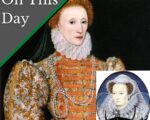
On this day in Tudor history, 10th July 1584, Francis Throckmorton was executed at Tyburn for high treason after the discovery of his plot, the Throckmorton Plot.
The Throckmorton Plot aimed to depose the Protestant Elizabeth I and to replace her with the Catholic Mary, Queen of Scots.
But why did Francis Throckmorton plot against his queen? Who did he plot with, and how was the plot discovered?
Find out more about Francis Throckmorton and his plot…
[Read More...]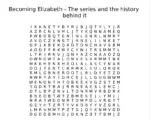
This week’s Sunday fun takes the new Starz series “Becoming Elizabeth”, and the real history behind it, as its inspiration.
How much do you know about the first four episodes, or the years 1547-8?
Test yourself with this fun word search.
[Read More...]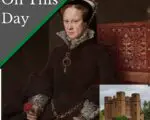
On this day in Tudor history, 9th July 1553, Mary (the future Mary I), daughter of King Henry VIII and Catherine of Aragon, wrote to her late half-brother’s privy council regarding “some evil” that she had heard.
This was three days after Edward VI’s death and the day after Mary had proclaimed herself queen at at Kenninghall.
But what was going on? What had Mary heard and was she going to do about it?
Find out more about the situation and Mary’s letter…
[Read More...]
Our Friday treat from the archives is an expert talk from Johanna Strong on Queen Mary I, who, I believe, is really stealing the show at the moment in the Starz series “Becoming Elizabeth”.
[Read More...]